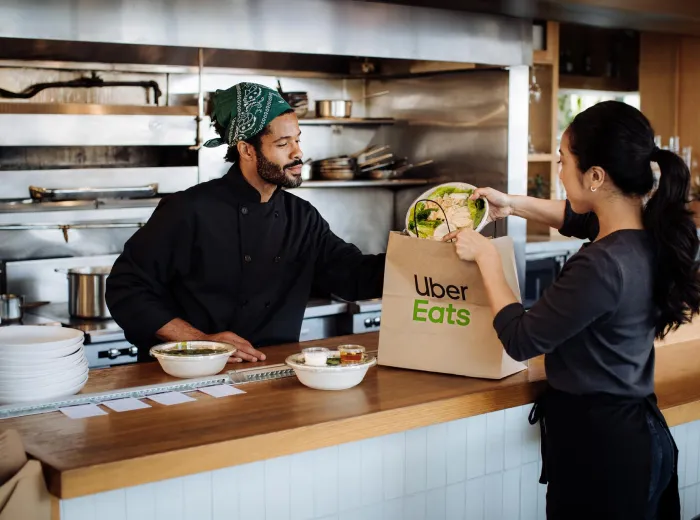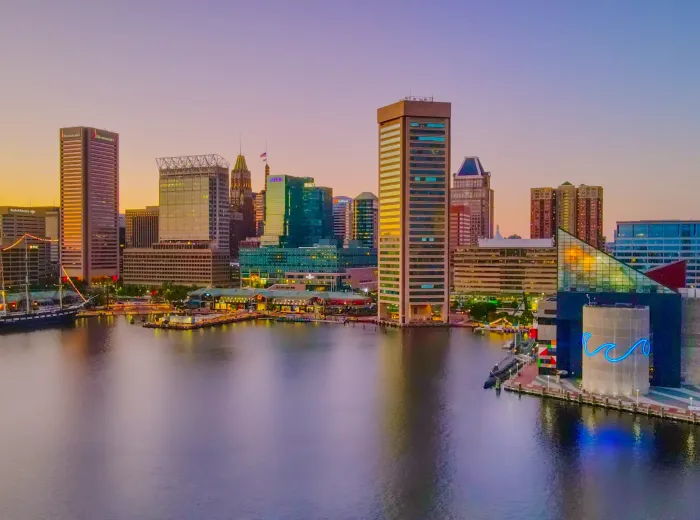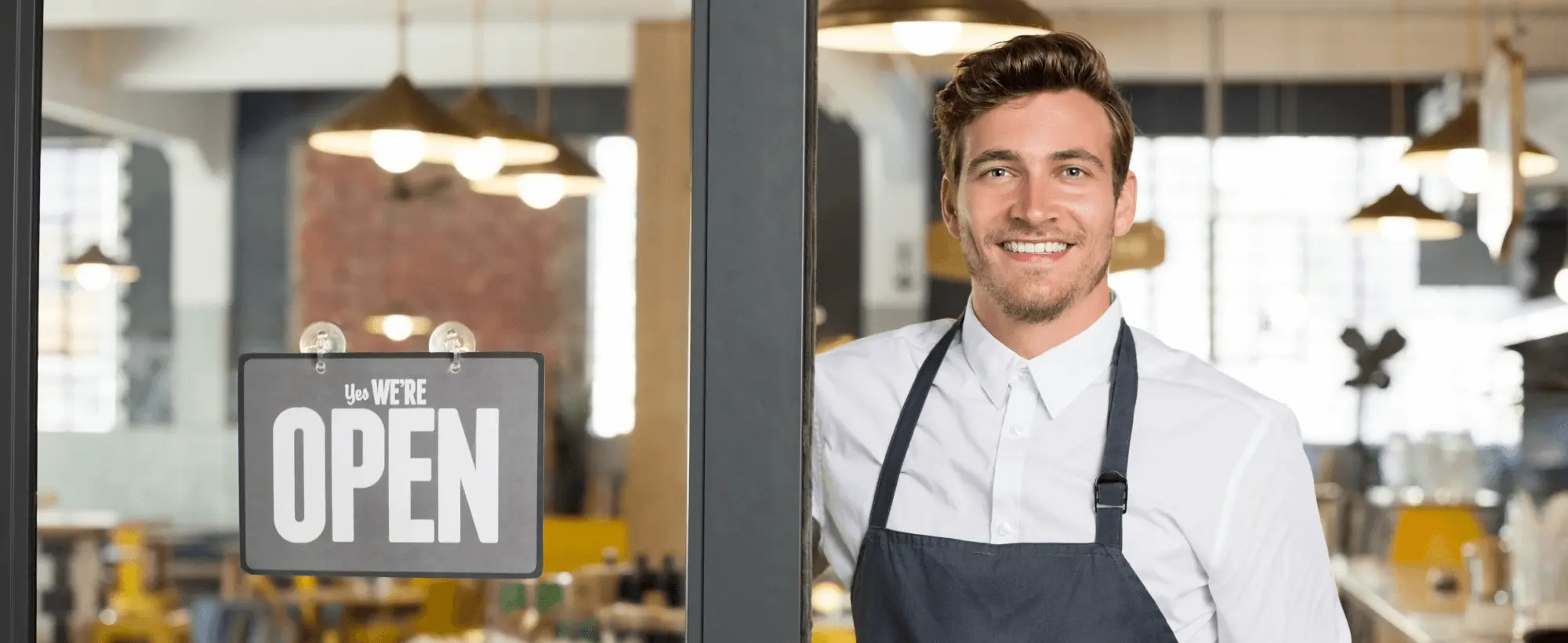
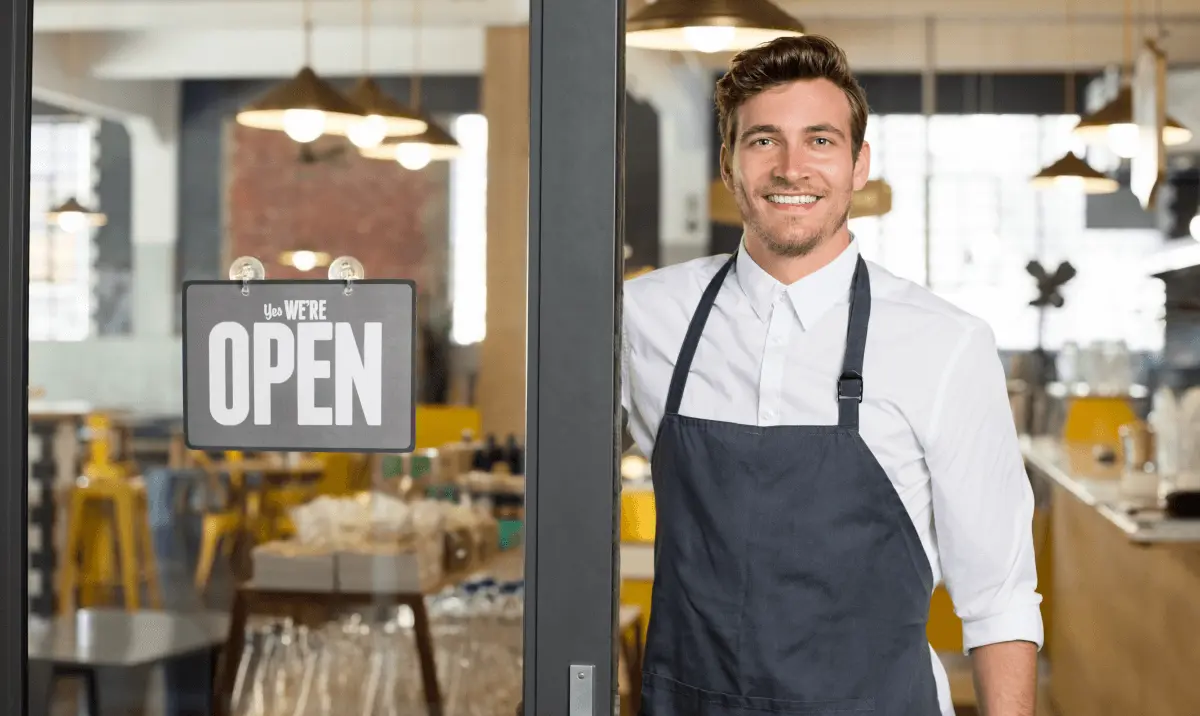
How Much Does It Cost to Open a Restaurant in London in 2025?
Opening a restaurant in London can be an exciting venture, but it’s essential to have a clear understanding of the costs involved before diving in. London, being one of the world’s most dynamic culinary cities, offers a wide range of opportunities for aspiring restaurateurs. However, it also comes with its own set of financial challenges. From securing a prime location to obtaining the necessary licenses and managing operational expenses, the costs can quickly add up.
In 2025, opening a restaurant in London will require navigating fluctuating real estate prices, rising labor costs, and the ever-evolving demands of modern diners. Whether you’re planning to open a cozy café in the suburbs or a fine-dining restaurant in central London, having a comprehensive budget is crucial to avoid unexpected surprises. This guide will walk you through every aspect of the costs associated with opening a restaurant in London, helping you to plan effectively and make informed financial decisions.
By the end of this article, you’ll have a detailed breakdown of what to expect in terms of expenses, from initial start-up costs to ongoing operational fees. Let’s dive into the specifics and explore what it really takes to bring your restaurant dream to life in the heart of London.
Would you like to listen our deep-dive conversation about this article?
Understanding the Key Expenses for Opening a Restaurant
Before opening your restaurant, it’s essential to understand the key expenses that will make up your budget. These costs vary depending on location, concept, and size of your restaurant, but having a clear picture of the major expenses can help you plan more effectively. From securing the right space to staffing and equipment, knowing what to expect in terms of upfront investment is crucial for financial success.
What is the Average Cost to Open a Restaurant in London?
The cost to open a restaurant in London can vary dramatically based on the location and type of establishment you’re planning. On average, starting a restaurant in London can cost anywhere between £200,000 and £1 million, depending on factors like real estate, fit-out, and staffing.
- Prime locations like Central London often carry higher costs, especially for rent and interior renovations.
- Restaurant type plays a significant role: Fine dining requires a larger upfront investment compared to fast-casual or cafés.
- Hidden fees such as insurance and contingency funds should also be factored into your initial budget.
Location Impact on Costs: Central vs. Outer London
Location is one of the biggest factors affecting the cost of opening a restaurant in London.
- Central London: The cost of real estate in neighborhoods like Soho, Mayfair, and Covent Garden is substantially higher than in outer London, with rents often exceeding £200 per square foot.
- Outer London: Areas like Richmond or Hackney offer more affordable rents, typically ranging from £40-£100 per square foot, but may lack the same foot traffic as central locations.
Choosing the right location involves balancing high visibility with manageable costs.
Budgeting for Different Restaurant Types: Fine Dining vs. Casual
The type of restaurant you want to open will significantly impact your budget. Fine dining establishments often require more capital compared to casual or fast-food options.
- Fine Dining: High-end restaurants come with the need for premium interior designs, high-quality kitchen equipment, and top-tier staff. These costs can easily push your investment beyond £500,000.
- Casual Dining or Fast Casual: A more relaxed setting will lower expenses related to interior design and equipment, usually requiring an investment between £150,000 and £300,000.
Choosing the right restaurant type not only affects your initial investment but also your long-term profitability and operating costs.
By understanding these key expenses, you’ll be better equipped to create a realistic budget and manage your finances as you plan your London restaurant.
Breaking Down Initial Start-Up Costs
When opening a restaurant in London, initial start-up costs can seem overwhelming. However, breaking these down into manageable categories helps you create a detailed budget that covers every aspect of your new venture. From securing a lease to designing the interior, each element requires careful financial planning. Below, we’ll explore the key areas you need to consider for your start-up costs.
Securing a Lease: Rent and Deposits
One of the first and most significant expenses when opening a restaurant in London is securing a lease.
- Upfront deposit: Typically, landlords will require a deposit of at least 3 to 6 months’ rent.
- Rent: In Central London, rents can range from £60,000 to over £200,000 per year, depending on location and property size.
- Lease negotiation fees: You may also need to factor in the cost of hiring a solicitor to help negotiate lease terms, which could cost between £1,000 and £5,000.
Overall, the cost of securing a lease can be a large portion of your initial outlay.
Renovation and Fit-Out: Designing Your Space
Designing your restaurant’s interior and fitting out the space to meet your vision is another critical expense.
- Interior design: The cost of hiring an interior designer and contractor varies, but expect to spend at least £30,000 to £100,000, depending on the complexity of your design.
- Furniture, fixtures, and equipment (FF&E): This includes tables, chairs, lighting, and décor, which can range from £20,000 to £150,000 depending on the quality and style.
- Kitchen installation: Installing a professional kitchen often costs between £30,000 and £150,000, depending on the size and the type of equipment needed.
These costs will depend heavily on the style and concept of your restaurant, so it’s essential to budget accordingly.
Kitchen Setup Costs: Equipment, Appliances, and Installation
A fully functional kitchen is the heart of any restaurant, and outfitting it with the right equipment is essential.
- Appliances: High-quality kitchen appliances like ovens, refrigerators, and dishwashers can cost between £20,000 and £80,000 depending on the size of the kitchen and brand.
- Installation: Professional installation of these appliances, including plumbing and electrical work, can add an additional £10,000 to £30,000.
- Ongoing maintenance: Be sure to set aside a contingency for kitchen equipment maintenance, which can be around £2,000 to £5,000 annually.
This portion of your budget ensures smooth operations from day one and reduces the risk of costly breakdowns later on.
Licensing and Permits
Obtaining the correct licenses and permits is crucial to operating legally in London. Failing to comply with regulations can lead to significant fines or even closure.
- Alcohol licenses: The cost of an alcohol license can range from £300 to £1,900, depending on the size of your restaurant and the type of alcohol sold.
- Health and safety permits: You’ll need to ensure that your restaurant complies with food safety and hygiene regulations, which may require inspections costing between £200 and £500.
- Music and entertainment licenses: If you plan to play music or host live performances, you’ll need to budget for a music license, which can cost up to £1,000 per year.
Ensuring all your licenses are in place helps avoid delays in your restaurant’s opening and protects you from potential legal issues.
By breaking down these start-up costs, you can ensure your budget covers every essential aspect of getting your restaurant off the ground in London. Careful planning here will help you avoid unexpected financial surprises later in the process.
Legal and Compliance Costs in London
Opening a restaurant in London requires careful attention to the legal and compliance costs involved. Failing to address these aspects could lead to fines, delays, or even the closure of your business. Understanding and budgeting for these costs will not only ensure that your restaurant operates within the law but also helps safeguard your investment. Below, we’ll outline the key legal and compliance expenses you need to consider.
Business Registration and Formation Costs
Before you can legally open your restaurant, you’ll need to register your business and choose the appropriate legal structure.
- Business registration fees: Registering a limited company in the UK costs approximately £12 if done online through Companies House.
- Choosing a legal structure: You can operate as a sole trader, limited company, or partnership, each with its own tax implications and registration costs.
- Professional advice: Hiring an accountant or solicitor to help with the business formation may cost between £500 and £2,000, depending on the complexity of your structure.
Taking care of these foundational steps ensures that your restaurant is legally compliant from the start.
Insurance Requirements
Insurance is essential for protecting your restaurant from a range of risks, including accidents, property damage, and legal claims.
- Public liability insurance: This is crucial for covering legal costs if a customer is injured or property is damaged. Expect to pay between £200 and £500 annually, depending on the size of your restaurant.
- Employer’s liability insurance: Legally required if you hire staff, this can cost between £250 and £1,000 per year, depending on the number of employees.
- Property insurance: To cover damages or theft of your restaurant’s physical assets, you should budget for £500 to £2,000 annually, depending on your location and the value of your assets.
Comprehensive insurance not only protects your business but also ensures you comply with legal requirements in the UK.
Health and Safety Regulations
Compliance with health and safety regulations is vital for running a restaurant in London. Failure to meet these standards can result in fines or closure.
- Food hygiene certification: All restaurants must comply with the Food Safety Act. You’ll need to pass inspections and possibly invest in training, which may cost between £100 and £500.
- Fire safety and risk assessments: London Fire Brigade requires restaurants to conduct fire safety assessments. Costs for professional assessments can range from £200 to £1,000, depending on the size of your premises.
- Waste disposal compliance: Restaurants are required to safely dispose of waste. You may need a contract with a licensed waste carrier, costing around £500 to £1,500 annually, depending on waste volume.
Following health and safety regulations not only avoids fines but also fosters a safer environment for your staff and customers.
By understanding and budgeting for these legal and compliance costs, you ensure that your restaurant operates within the bounds of the law, protecting your investment and your reputation.
Staffing and Recruitment Costs
Hiring the right team is critical to the success of your restaurant, but it also represents a significant part of your overall budget. Staffing and recruitment costs vary depending on the type of restaurant, the size of your team, and the level of experience you require from your employees. Ensuring that you budget adequately for salaries, recruitment fees, and training is essential for smooth operations and a positive customer experience.
How Much Should You Budget for Hiring Staff?
Staff salaries will make up a large portion of your ongoing expenses, so it’s important to plan for competitive wages in line with London’s cost of living and minimum wage regulations.
- Chefs and kitchen staff: Depending on their experience, chefs in London can earn between £30,000 and £60,000 annually, while kitchen assistants may be paid around £20,000 to £25,000.
- Waitstaff and bartenders: Salaries for front-of-house staff typically range from £18,000 to £25,000 per year. However, many waitstaff also rely on tips, which can supplement their income.
- Management: A restaurant manager can expect to earn between £30,000 and £50,000 annually, depending on the size and type of restaurant.
In addition to these core staff positions, you should also budget for payroll taxes, pensions, and benefits, which could add an additional 20% to 30% on top of salaries.
Recruitment Agency Fees
If you’re looking for top-tier talent or simply don’t have the time to recruit yourself, hiring a recruitment agency can help streamline the process.
- Agency fees: Recruitment agencies typically charge 10% to 20% of the employee’s annual salary as a placement fee, which could range from £2,000 to £12,000 depending on the position.
- Job advertising costs: If you decide to manage recruitment yourself, advertising your vacancies on platforms like Indeed or Caterer.com can cost between £50 and £300 per listing, depending on the job board.
While using a recruitment agency can be more expensive, it often saves time and ensures you find qualified candidates quickly, especially for key roles like head chefs or managers.
Employee Training and Certifications
Training your staff is not only an investment in their skills but also a requirement in many cases, particularly in terms of food safety and customer service.
- Food safety training: All kitchen staff must undergo food safety training, which can cost between £50 and £200 per employee, depending on the level of certification required.
- Customer service and management training: For front-of-house staff and managers, investing in customer service training or leadership courses can help improve efficiency and customer satisfaction. These courses may cost £100 to £500 per person.
- Ongoing professional development: To retain top talent, consider budgeting for continuous professional development, which could include advanced culinary courses or management seminars.
Investing in proper training not only ensures compliance with regulations but also improves overall staff performance and customer satisfaction, leading to a more successful restaurant.
By carefully budgeting for staffing and recruitment costs, you can ensure that your restaurant has the skilled team it needs to operate effectively while staying within your financial plan.
Ongoing Operational Costs to Consider
Once your restaurant is up and running, you’ll need to manage a range of ongoing operational costs to keep things running smoothly. These expenses can quickly add up, so it’s important to budget carefully for everything from utilities to inventory and marketing. Understanding and managing these costs effectively is key to maintaining profitability in London’s competitive restaurant market.
Utility Bills and Maintenance
Your restaurant’s utility bills will be a major part of your ongoing operational costs. These can fluctuate based on the size of your restaurant and its energy needs.
- Gas, electricity, and water: Depending on the size and type of your restaurant, utility costs can range from £1,000 to £2,500 per month. Gas bills for kitchens can be particularly high if you have energy-intensive equipment.
- Waste disposal: Restaurants produce a significant amount of waste, and you’ll need to pay for regular waste collection services. This typically costs around £200 to £500 per month, depending on your restaurant’s size.
- Ongoing maintenance: Routine maintenance of equipment and facilities is crucial to avoid breakdowns. Budget around £1,000 to £3,000 annually for regular maintenance and emergency repairs.
Having a strategy for reducing energy consumption, such as using energy-efficient appliances, can help mitigate these costs over time.
Inventory and Supplier Costs
Managing your inventory and supplier relationships is essential to controlling your food and beverage costs, which make up a significant portion of your restaurant’s ongoing expenses.
- Food and beverage costs: Depending on your menu, food and beverage costs typically range between 25% and 35% of your total sales. For a restaurant in London, this can translate to monthly costs of £5,000 to £30,000.
- Supplier contracts: Establishing long-term relationships with reliable suppliers can help you negotiate better deals. Consider bulk purchasing or seasonal agreements to lower costs.
- Waste management: Properly managing food waste can help reduce costs. Implementing portion control, using surplus ingredients, and composting can reduce your inventory expenses.
Careful inventory management, including tracking stock levels and minimizing waste, will help you keep these costs under control.
Marketing and Advertising
Even after opening, you’ll need to continue investing in marketing to attract new customers and retain existing ones. Marketing costs can vary depending on the strategies you use.
- Digital marketing: Maintaining a strong online presence through social media, Google ads, and email marketing is crucial for attracting customers. Budget £500 to £3,000 per month, depending on your approach.
- Website maintenance: If you have a dedicated website for your restaurant, you’ll need to pay for hosting, design updates, and potential SEO services. Expect to spend around £100 to £500 per month on these services.
- Local marketing: Participating in community events, offering local promotions, or printing flyers can help raise awareness of your restaurant. Local marketing initiatives may cost between £200 and £1,000 per month.
Effective marketing strategies are essential for growing your customer base, especially in London’s highly competitive restaurant scene.
By planning for these ongoing operational costs, you can ensure that your restaurant runs efficiently while maintaining profitability. Consistent monitoring and adjusting of these expenses will help you avoid financial strain and keep your restaurant on a successful path.
Technology and Software Expenses
In today’s restaurant industry, technology plays a crucial role in streamlining operations, improving customer experience, and increasing efficiency. From point-of-sale (POS) systems to online ordering platforms, investing in the right technology can make a significant impact on your restaurant’s success. However, these systems come with associated costs that need to be considered in your budget.
Point of Sale (POS) Systems
A reliable POS system is essential for managing transactions, tracking sales, and monitoring inventory. The right system can help streamline your operations and provide valuable insights into your restaurant’s performance.
- Initial setup costs: The cost of setting up a POS system can range from £500 to £3,000, depending on the size of your restaurant and the complexity of the system.
- Monthly subscription fees: Many POS systems operate on a subscription basis, with fees ranging from £50 to £300 per month, depending on the features and number of terminals.
- Additional hardware: You may also need to budget for additional hardware such as receipt printers, barcode scanners, and tablets, which can add £200 to £1,000 to your initial setup costs.
Investing in a quality POS system ensures smooth day-to-day operations, better data management, and improved customer service.
Reservation and Delivery Platforms
In London’s competitive dining scene, offering online reservations and delivery services is essential to meeting customer expectations. Partnering with third-party platforms can help attract more customers but comes with associated fees.
- Reservation platforms: Services like OpenTable or ResDiary typically charge a flat monthly fee or a per-cover booking fee. Expect to pay between £50 and £200 per month for reservation systems.
- Delivery platforms: If you choose to partner with delivery services like Deliveroo or Uber Eats, you’ll typically pay a commission of 15% to 35% per order. It’s crucial to factor these fees into your pricing structure.
- Integration with POS systems: Some platforms offer integration with your POS system, which can streamline order management but may come at an additional cost of £100 to £500 for setup.
While these platforms can expand your customer base, careful cost management is necessary to ensure their profitability for your business.
Online Ordering and Payment Processing Systems
As more customers expect the convenience of online ordering, implementing an efficient system can enhance customer satisfaction and drive sales.
- Online ordering systems: Setting up an online ordering system either through your website or a third-party provider typically costs between £1,000 and £5,000 for development and integration.
- Payment processing fees: Payment gateways like Stripe or Square charge a transaction fee, often around 1.5% to 3% per transaction. Depending on your sales volume, this can add up significantly over time.
- Mobile payments: More customers are using mobile payment options like Apple Pay and Google Pay. Offering these payment methods can incur additional setup costs, usually ranging from £100 to £300.
Investing in a reliable online ordering and payment processing system is essential for meeting customer expectations in a digital-first market.
By accounting for technology and software expenses in your budget, you can ensure that your restaurant is equipped to handle modern consumer demands while streamlining your operations for maximum efficiency.
Contingency Planning: Hidden and Unexpected Costs
Even with the most meticulous planning, unexpected costs can arise when opening and operating a restaurant in London. It’s vital to have a contingency plan to address these surprises without derailing your budget. Setting aside a portion of your budget for hidden and unexpected costs can prevent financial strain and keep your restaurant on track during unforeseen circumstances.
Handling Delays and Overruns
Construction and licensing delays are common when opening a new restaurant, and they can quickly inflate your costs.
- Construction delays: Unexpected delays in renovations or fit-out work can push back your opening date, leading to higher labor costs and lost revenue. Budget an additional 10% to 20% of your total renovation costs for potential overruns.
- Licensing delays: Delays in obtaining necessary permits or licenses can prevent you from opening on time, costing you months of rent without any income. Be prepared to cover rent and utilities for extra months in case of delays.
Anticipating delays and factoring them into your budget will give you a financial cushion to absorb these setbacks.
Emergency Repairs and Equipment Failures
Once your restaurant is up and running, equipment failures or unexpected repairs can arise, and they often come with significant costs.
- Kitchen equipment breakdowns: Essential kitchen appliances such as ovens, refrigerators, or dishwashers can fail unexpectedly. Repairs or replacements can range from £500 to £5,000, depending on the severity of the issue.
- Plumbing or electrical issues: These can also crop up unexpectedly, requiring emergency repairs that can cost £1,000 or more.
- Ongoing maintenance contracts: To mitigate the risk of costly repairs, consider investing in maintenance contracts for your essential equipment. This can cost between £500 and £2,000 annually, depending on the scope of coverage.
Setting aside a contingency fund for emergency repairs ensures you won’t be blindsided by equipment failures that disrupt operations.
Legal Disputes and Fines
Running a restaurant means navigating a range of legal and regulatory requirements. Even with careful attention to compliance, disputes or fines can arise.
- Employee disputes: Unexpected legal disputes with employees can result in court fees, settlements, or compensation claims. Legal fees for handling such disputes can range from £2,000 to £10,000, depending on the complexity of the case.
- Regulatory fines: Fines for health and safety violations, improper waste disposal, or failure to comply with licensing requirements can range from £500 to £5,000 or more.
- Noise or neighborhood complaints: Especially in busy areas like London, noise complaints from neighbors or breaches of local regulations can result in fines or mandatory improvements.
Allocating funds for legal support and potential fines will help protect your business from costly legal hurdles.
By preparing for these hidden and unexpected costs, you can safeguard your restaurant from financial setbacks and ensure smoother operations during unforeseen challenges. Planning a contingency budget—typically 10% to 15% of your total project costs—provides a safety net that can make the difference between success and unnecessary financial stress.
Financial Planning for Long-Term Sustainability
Running a successful restaurant in London requires not only attention to day-to-day expenses but also careful long-term financial planning. Sustainability in your financial approach ensures that your business remains profitable and can adapt to changes in the market. In this section, we’ll cover essential financial strategies to help you plan for the future and protect your restaurant’s financial health.
Setting Up a Business Bank Account and Credit Lines
Establishing a dedicated business bank account and securing credit lines are critical steps for managing cash flow and building a solid financial foundation.
- Business bank account: A separate business account allows you to track income, expenses, and profits more effectively. Most UK banks offer tailored business accounts, with fees ranging from £5 to £30 per month, depending on the services provided.
- Credit lines and overdraft facilities: Securing a business credit line or overdraft can provide a financial buffer in case of slow periods or unexpected expenses. Interest rates for business overdrafts typically range from 5% to 10%, depending on the bank and your credit history.
Having a clear separation between personal and business finances ensures better transparency and more efficient cash flow management, while credit lines offer a safety net in times of need.
Creating a Financial Cushion: Savings and Emergency Funds
Building a financial cushion for your restaurant is essential for covering unexpected expenses and ensuring long-term viability.
- Emergency savings: Set aside at least 3 to 6 months’ worth of operational expenses, including rent, salaries, and utilities, to cover potential downturns or emergencies. This could amount to £50,000 to £150,000, depending on your restaurant’s scale.
- Cash reserves for slow seasons: London’s restaurant industry can experience seasonal fluctuations, particularly in quieter months. Having additional cash reserves helps you maintain payroll and cover costs during these periods.
- Contingency fund for growth: A portion of your financial cushion can also be reserved for future growth opportunities, such as expanding to a new location or investing in marketing campaigns.
Maintaining an emergency fund reduces financial stress and ensures your restaurant can weather any economic challenges or slow business periods.
When to Seek Investors or Loans
If you’re planning to expand or need additional capital, knowing when and how to seek outside funding is a crucial aspect of financial planning.
- Crowdfunding: Platforms like Kickstarter or Seedrs allow you to raise small amounts of capital from a large number of investors in exchange for perks or equity. This can be a great way to raise funds while building a loyal customer base.
- Bank loans: Traditional bank loans offer a more structured approach to financing but often come with strict requirements, such as a strong credit history and detailed business plans. Interest rates for business loans in the UK can range from 3% to 12%, depending on the lender and the loan amount.
- Angel investors: If you’re looking for substantial capital and are willing to give up some equity, angel investors can provide both funding and industry expertise. However, you’ll need to be prepared to share decision-making power.
Knowing the right time to seek investment or loans, and ensuring that you have a solid repayment or growth strategy in place, can help fuel your restaurant’s long-term success.
By integrating these financial planning strategies, you’ll create a sustainable financial structure that supports both the short-term needs of your restaurant and its long-term growth. Sound financial planning ensures that your business can adapt to changes, seize new opportunities, and thrive in London’s competitive restaurant landscape.
Is It Worth the Investment? Profitability and ROI
Opening a restaurant in London can be a significant financial commitment, but understanding the potential return on investment (ROI) and profitability can help you assess whether the investment is worth it. Calculating ROI involves looking at how long it will take to recoup your initial investment and how much profit you can expect to generate over time. Below, we’ll explore the key factors that influence profitability and ROI for restaurants in London.
Average Time to Break Even in London’s Restaurant Market
The time it takes to break even in London can vary widely depending on the location, concept, and size of your restaurant.
- Average break-even period: For most restaurants in London, the average time to break even is between 12 to 24 months. However, this can be longer for fine dining establishments due to higher initial investments.
- Factors affecting break-even: Rent costs, staffing expenses, and customer footfall can all impact how quickly you break even. Restaurants in high-traffic areas may achieve profitability faster, while those in less central locations may take longer.
- Cash flow management: Effective management of cash flow, especially in the first year, is critical to staying on track and hitting your break-even point. Monitoring expenses closely and avoiding overspending can shorten the time to profitability.
Understanding your restaurant’s break-even timeline helps you gauge the viability of your investment and set realistic financial expectations.
Profit Margins for Different Restaurant Models
Profit margins in the restaurant industry can vary significantly depending on the type of establishment you run. Knowing your expected profit margin can help you make better decisions about pricing, cost control, and menu offerings.
- Fine dining: Profit margins for high-end restaurants typically range between 5% to 10%. While these establishments tend to generate higher revenue per customer, they also face higher overhead costs such as premium ingredients, experienced staff, and luxurious interiors.
- Casual dining: Profit margins in casual dining establishments are usually in the range of 10% to 15%. These restaurants benefit from a larger customer base and quicker table turnover, allowing them to generate consistent revenue.
- Fast-casual and quick-service: Fast-casual restaurants often enjoy profit margins of 15% to 20%, thanks to lower labor costs and simplified menus. Quick-service restaurants (QSRs), with their high volume and lower overheads, typically achieve the highest margins, often around 20% or more.
By choosing the right restaurant model and managing your costs effectively, you can optimize your profit margins and increase your return on investment.
How to Maximize ROI with Smart Investments
Maximizing your return on investment involves making strategic decisions that not only control costs but also enhance your restaurant’s revenue potential.
- Invest in marketing: A strong marketing strategy, both online and offline, can help you attract a steady stream of customers. Investing in local SEO, social media marketing, and partnerships with food influencers can significantly boost visibility.
- Optimize your menu: Menu engineering, which involves analyzing the profitability of each dish, can help you focus on high-margin items while minimizing low-performing ones. Offering seasonal or limited-time dishes can also generate excitement and increase sales.
- Control operating costs: Regularly reviewing and negotiating with suppliers, reducing waste, and streamlining operations through technology can help keep operating costs under control, allowing you to maximize profitability.
- Enhance customer experience: Investing in customer service training, loyalty programs, and ambiance can increase customer retention, leading to more repeat business and positive word-of-mouth referrals.
By focusing on smart investments and cost control, you can increase your restaurant’s profitability and achieve a faster return on your initial investment.
In conclusion, while opening a restaurant in London requires substantial financial commitment, careful planning, cost management, and strategic investments can make it a highly profitable venture. By understanding your potential profit margins and ROI, you can make informed decisions about the long-term success of your restaurant.
Key Takeaways
These takeaways highlight the key considerations and strategies needed to make your restaurant venture in London a financial success.
- Start-up costs can vary significantly: Opening a restaurant in London typically requires an investment ranging from £200,000 to £1 million, depending on factors like location, concept, and size.
- Location matters: Central London locations come with higher rent and fit-out costs but offer more foot traffic, while outer London areas may be more affordable but potentially lower in visibility.
- Licenses and permits are essential: Budget for alcohol licenses, health and safety certifications, and music/entertainment permits to avoid delays and fines.
- Staffing and recruitment: Employee salaries and training represent a significant portion of operational expenses, so plan carefully for competitive wages and recruitment agency fees.
- Technology investments are critical: POS systems, online ordering platforms, and reservation tools streamline operations but come with setup and subscription fees.
- Contingency planning is a must: Set aside 10% to 15% of your total budget for hidden or unexpected costs such as construction delays, emergency repairs, and legal disputes.
- Profitability varies by restaurant type: Fine dining has smaller profit margins (5%-10%) compared to casual dining (10%-15%) and fast-casual (15%-20%).
- Long-term financial planning: Establishing a financial cushion, seeking investors, and focusing on maximizing ROI through smart investments will help ensure your restaurant’s sustainability.
ABOUT THE AUTHOR
Erkin Coban
Your Customers Deserve The Best
And we got Menuviel for them.
The fastest and easy-to-use online QR menu with 12+ unique features. Choose Menuviel and elevate your service quality to the next level.
Use free for the first 30 days.
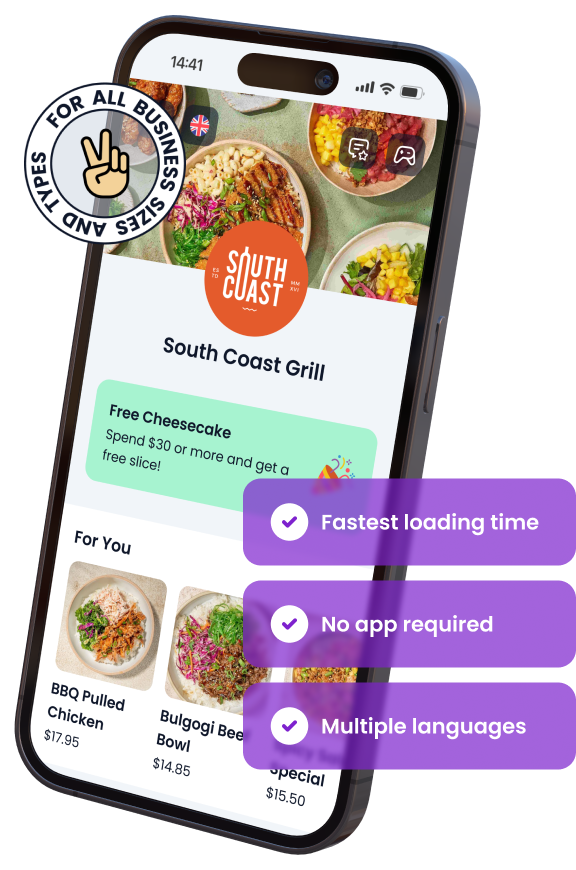
In This Article

Free AI Tools for Restaurants
TRY NOW ➜

Show bitterness level with clear labels
Clearly mark each dish as mild, hot, or very hot to match customer preferences and avoid complaints.





